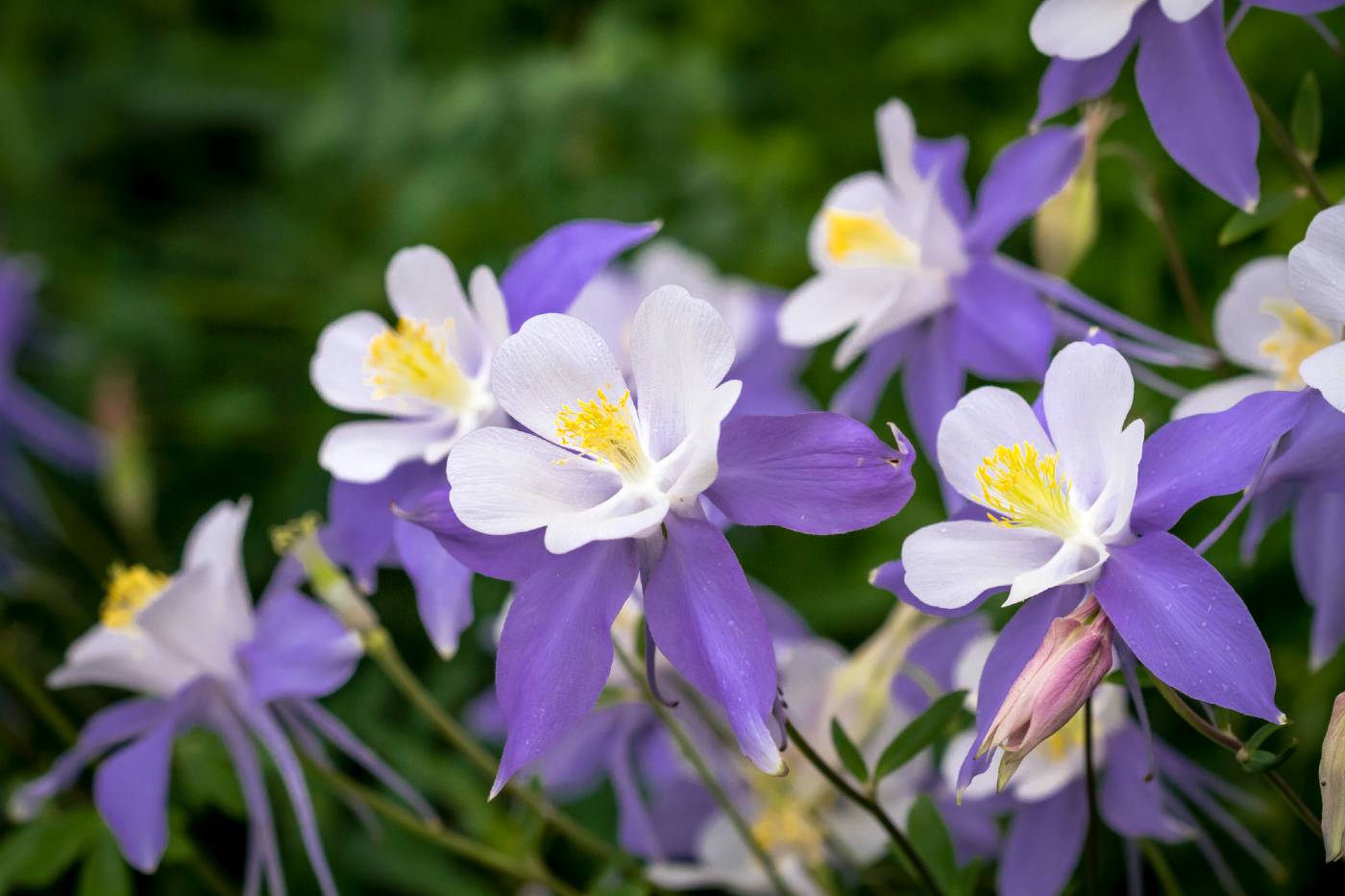Sometimes planning your garden is almost as fun as creating it! I love having a lush array of plants in my garden, and before buying them, I always plan which ones will make a perfect addition to my flowerbeds.
If you’ve always wanted to showcase the whole alphabet of flowers in your garden, here are 35 flowers that start with C for you to choose from.
List of Flowers that Start with the Letter C
- Cosmos (Cosmos bipinnatus)
- Cornflower (Centaurea cyanus)
- Calendula (Calendula officinalis)
- Cockscomb (Celosia argentea)
- Cerinthe (Cerinthe major subsp. purpurascens)
- Clarkia (Clarkia unguiculata)
- Craspedia (Craspedia globosa)
- Chinese forget-me-not (Cynoglossum amabile)
- Carthamus (Carthamus tinctorius)
- Coreopsis (Coreopsis tinctoria)
- Cup and saucer vine (Cobaea scandens)
- China asters (Callistephus chinensis)
- Clary sage (Salvia viridis)
- California poppy (Eschscholzia californica)
- Crocosmia (Crocosmia spp.)
- Campanula (Campanula rotundifolia)
- Columbine (Aquilegia spp.)
- Cephalaria (Cephalaria gigantea)
- Centranthus (Centranthus ruber)
- Cupid’s dart (Catananche caerulea)
- Chrysanthemum (Chrysanthemum spp.)
- Chocolate cosmos (Cosmos atrosanguineus)
- Cow vine (Campsis radicans)
- Clematis armandii (Evergreen clematis)
- Clematis viticella (Virgin’s bower)
- Clitoria ternatea (Blue butterfly pea)
- Cardoon (Cynara cardunculus)
- Calycanthus (Calycanthus floridus)
- Camellia japonica (Japanese camellia)
- Chinese dogwood (Cornus kousa)
- Cornelian cherry dogwood (Cornus mas)
- Crocus (Crocus spp.)
- Calla lily (Zantedeschia spp.)
- Coneflower (Echinacea purpurea)
- Cyclamen (Cyclamen purpurascens)
Annual Flowers that Start with the Letter C
Cosmos (Cosmos bipinnatus)
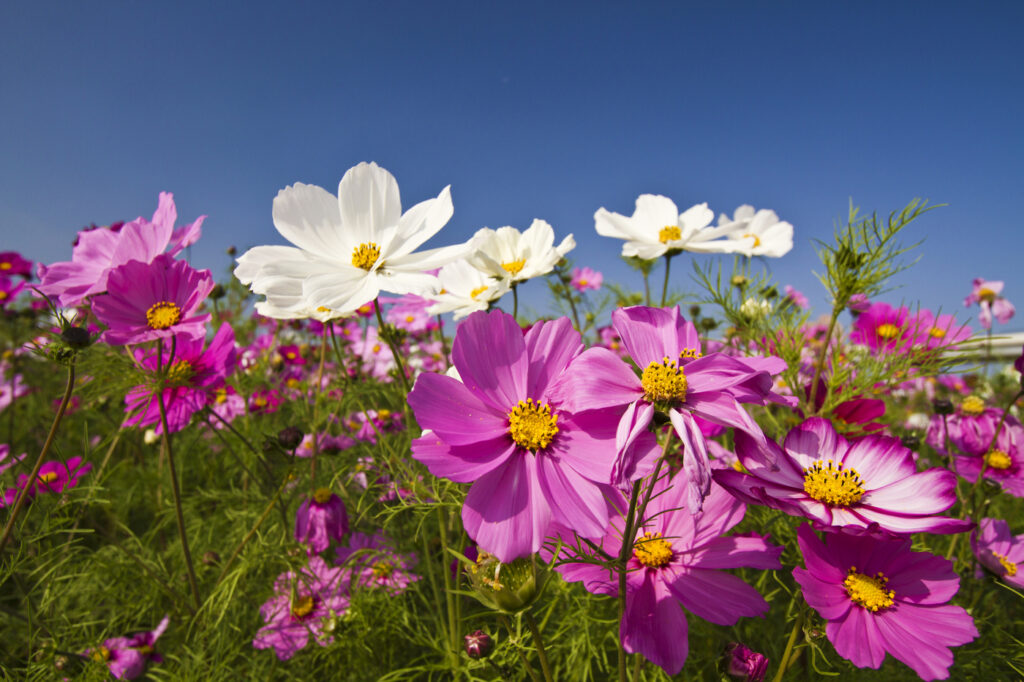
Cosmos are popular flowers that start with C, for a good reason. These tall, daisy-like flowers come in a variety of colors and are incredibly easy to grow from seed.
With regular deadheading, the cosmos will flower from early summer into fall. Some notable cultivars are ‘Afternoon white’ with crisp, pure white blooms and ‘Rubenza’ with its large maroon petals surrounding a yellow center.
Cornflower (Centaurea cyanus)
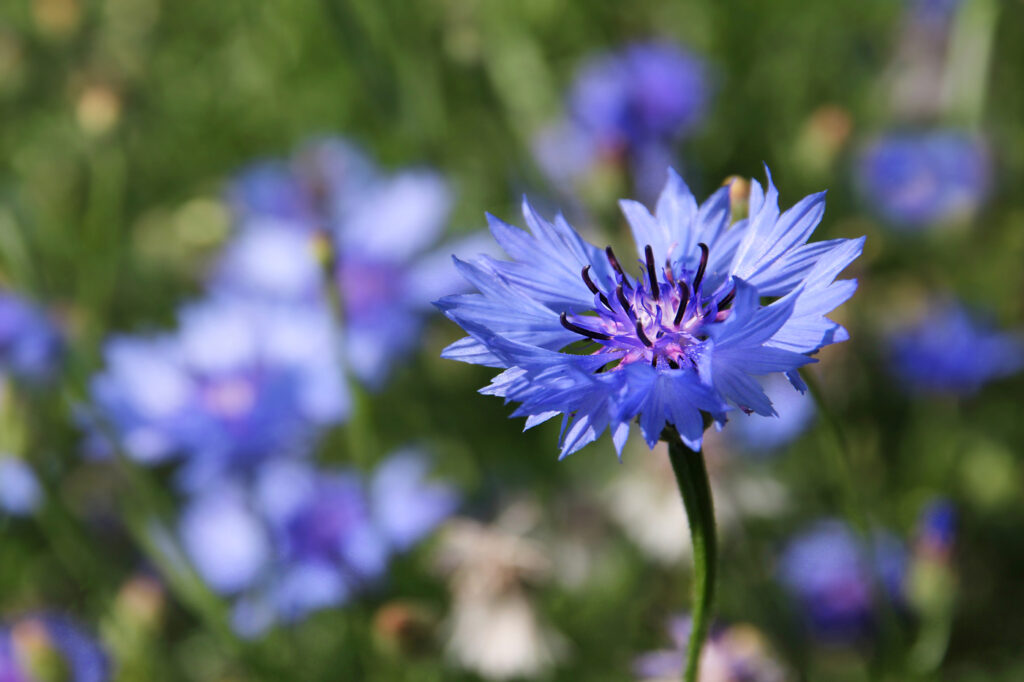
Also known as bachelor’s buttons, cornflowers have a wide range of shades, from classic blue to trendy white or deep burgundy. These are self-sowing annuals that will lend your garden a wildflower aesthetic and bloom year after year.
Calendula (Calendula officinalis)
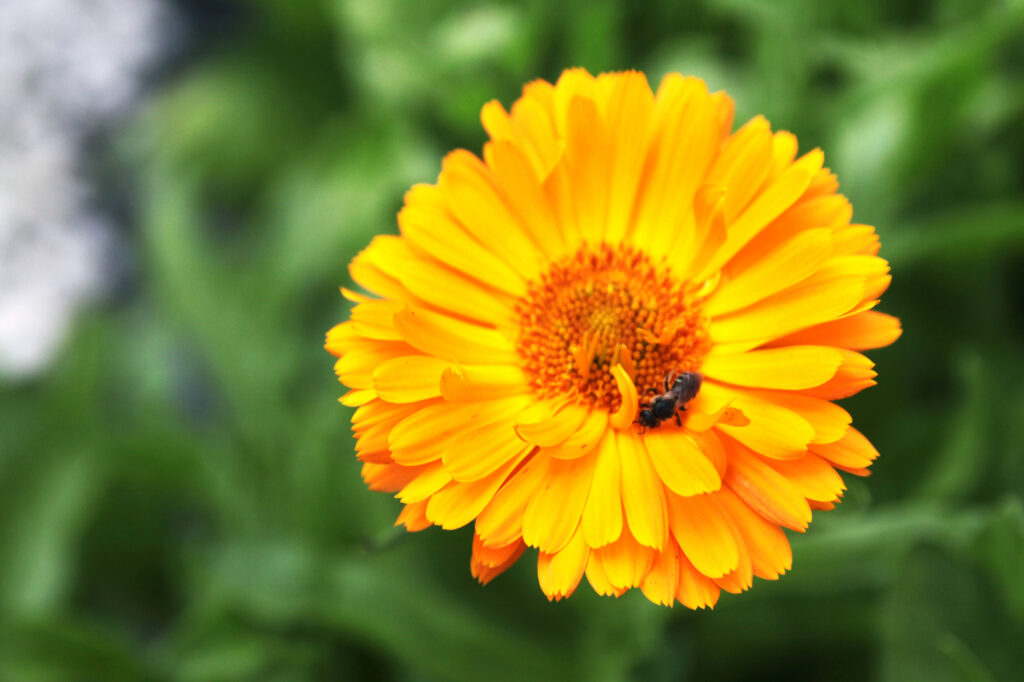
Calendula is only one of the common flowers that start with C and has many uses. The cheery orange blooms will brighten up any garden.
Its extract is even more helpful; it has been traditionally used to soothe irritated skin! Calendula has a long blooming period and will happily re-sow around your garden.
Cockscomb (Celosia argentea)
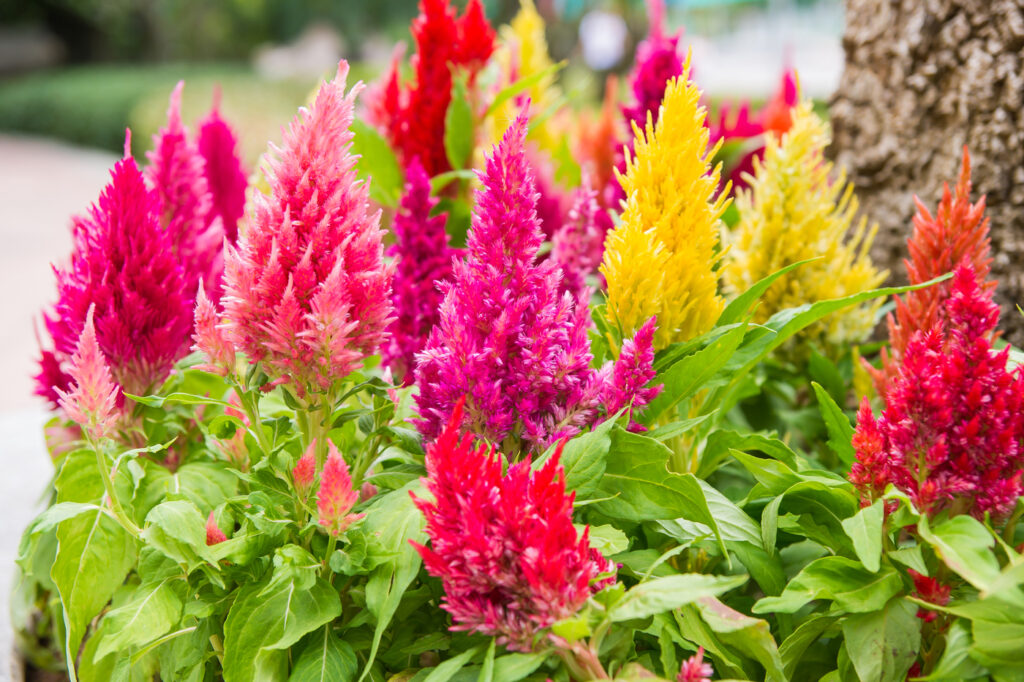
Cockscomb is an exciting flower in the amaranth family. Originally from Africa, it has become highly prized in the floral industry and comes in various colors and shapes. It grows to about an incredible height of 3 feet.
For an excellent blending tool in your landscape, plant the ‘Plumosa’ varieties with their soft feathery flowers.
Cerinthe (Cerinthe major subsp. purpurascens)
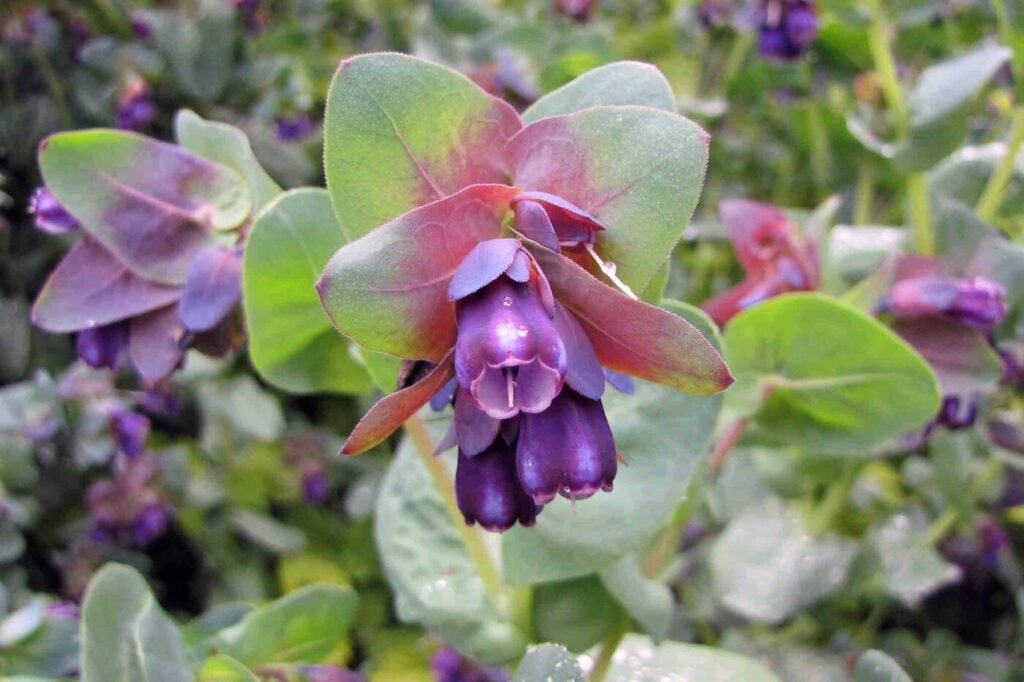
Also known as honeywort, these low-growing plants produce tubular, hanging purple flowers with attractive blue-gray foliage. Cerinthe flowers thrive in hot sunny conditions and is especially loved by bees and hummingbirds.
Clarkia (Clarkia unguiculata)
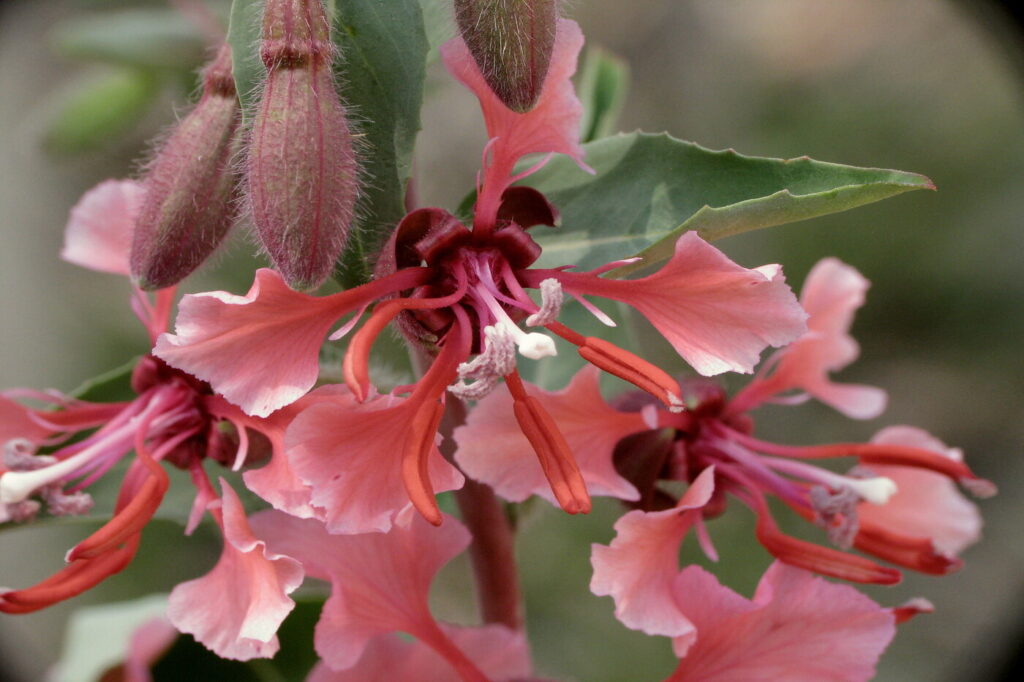
Clarkia is a wildflower native to the Western US, also known as mountain garland. These basal branching plants produce petite pink blooms that open at the bottom of the stem and continue to open upwards.
Clarkia grows to approximately 3 feet and acts as a blending agent, softening spaces between structural plants.
Craspedia (Craspedia globosa)
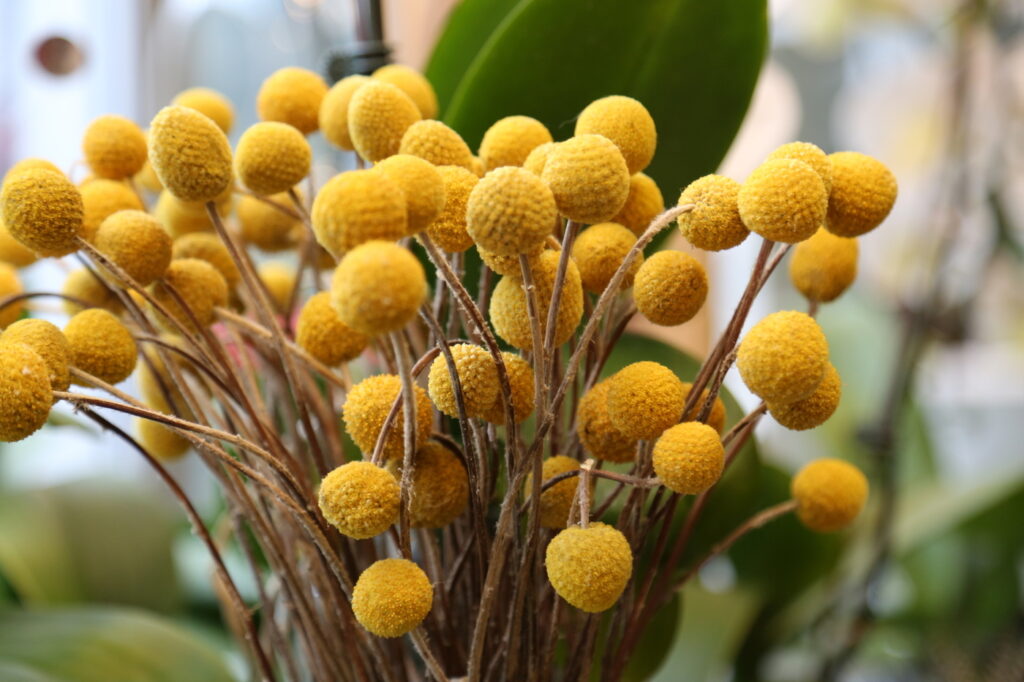
These unusual flowers are also known as billy buttons or drumstick flowers and are native to Australia and New Zealand. Craspedia has attractive silvery green basal foliage and the flowers emerge on long, unbranched stems.
The yellow ball-shaped flowers are great for flower arrangements and dry beautifully for everlasting arrangements. They can be successfully grown as perennials in warmer climates but are generally treated as annuals in places with cold winters.
Chinese forget-me-not (Cynoglossum amabile)
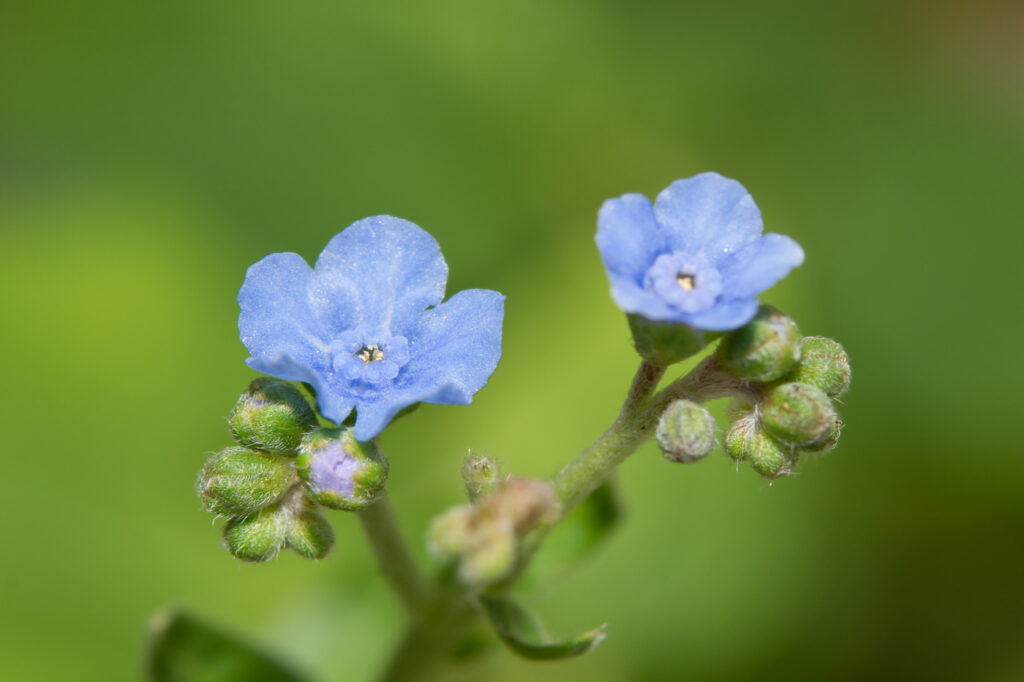
These flowers come in either electric blue or pale pink and will readily re-sow themselves around your garden. They are absolutely loved by bees and pollinators and make an excellent plant for the front of a border.
Carthamus (Carthamus tinctorius)
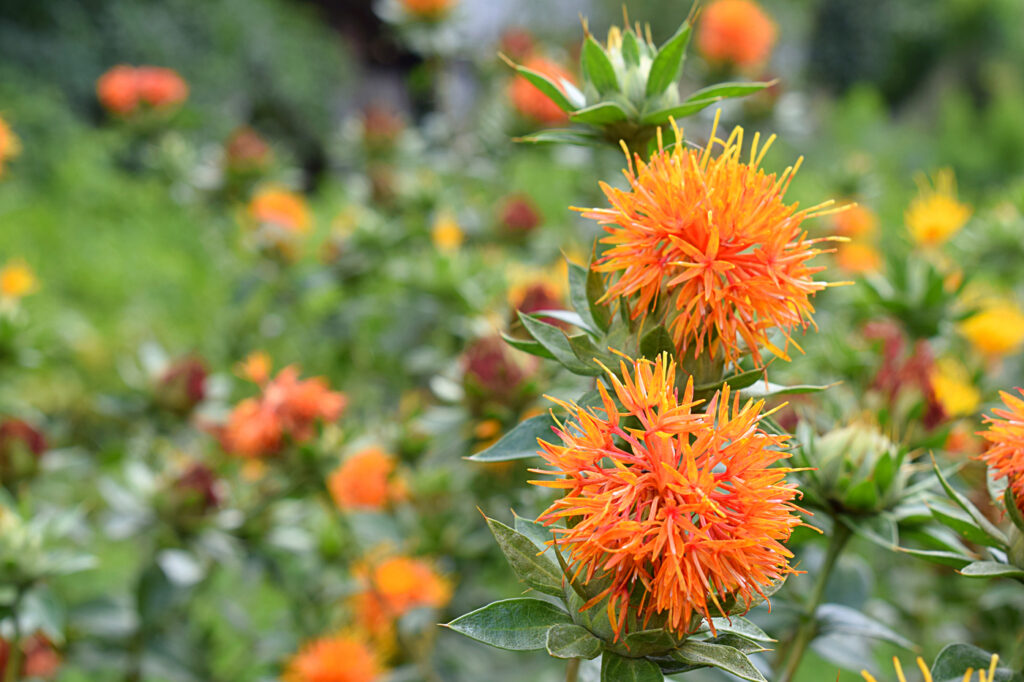
This drought-tolerant plant, also known as safflower, is one of humanity’s oldest crops.
Initially grown in Mesopotamia, it is a multi-branching dense plant that grows up to 2 feet and produces multiple thistle-like blooms with fiery orange petals. The petals can be used as a substitute for saffron.
Coreopsis (Coreopsis tinctoria)
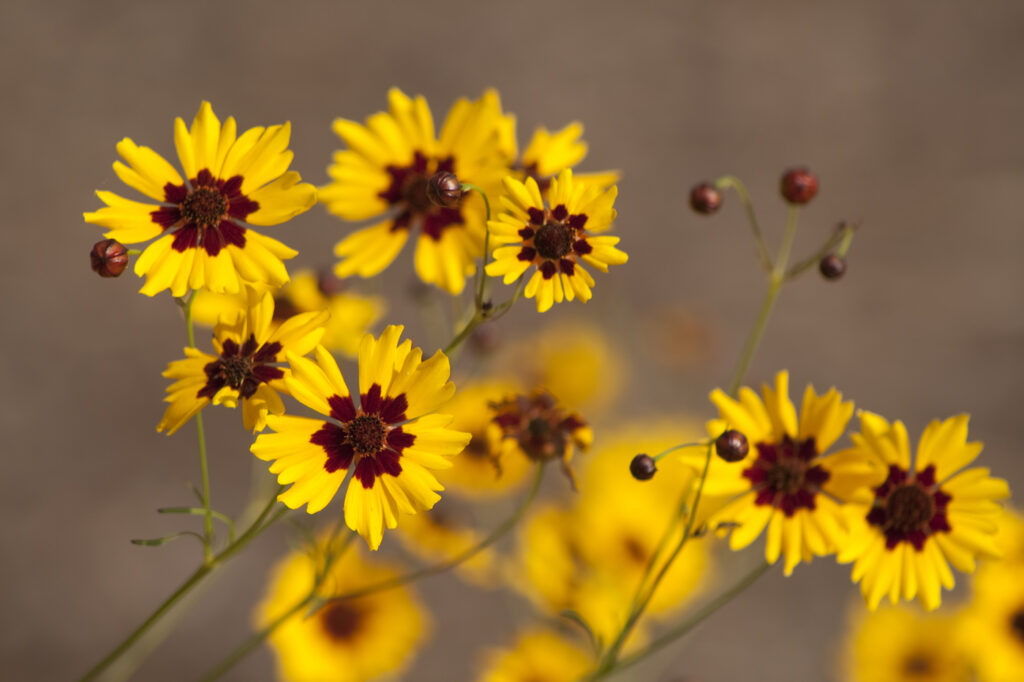
This garden workhorse is long blooming from early summer through fall and produces an abundance of flowers in a range of warm colors from pure yellow to variegated reds and oranges.
It’s drought tolerant, deer resistant, and very attractive to butterflies. In addition, it will reseed itself and lend a wildflower look to gardens.
Cup and saucer vine (Cobaea scandens)
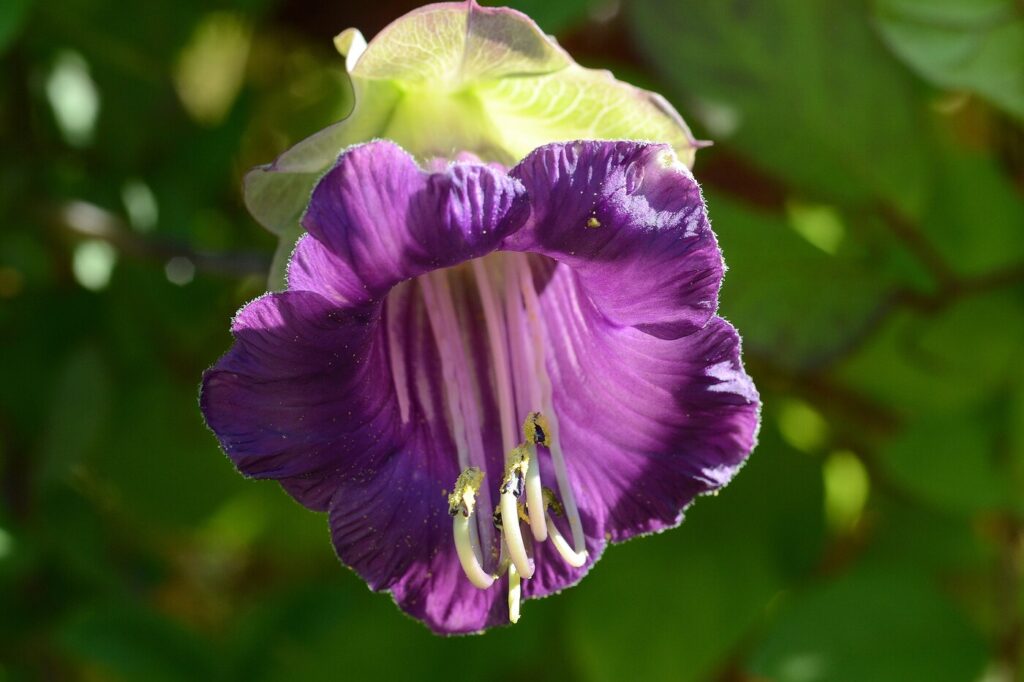
This vigorous climber needs a long hot season and a sturdy support structure to climb. During its blooming season, it will produce copious amounts of large, fragrant bell-shaped flowers followed by green oval fruits.
It may overwinter in warmer zones but is generally treated as an annual in cooler climates. Cup and saucer vines can bloom soft purple or whitish-green flowers.
China asters (Callistephus chinensis)
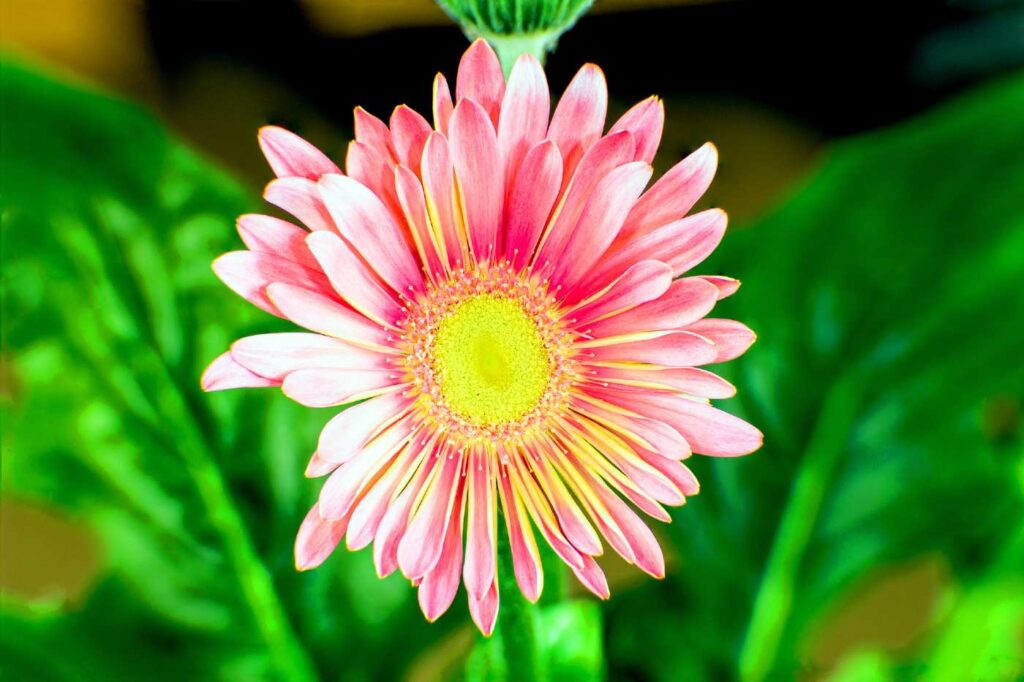
True to their name, China asters are annuals native to China and have become very popular in the floral industry for their dense peony-like blooms. They are relatively easy to grow from seed and can reach up to 3 feet.
Some notable varieties are ‘Lady coral lavender’ for its unusual dusky lavender blooms and ‘Tower chamois’ for its dense peachy flowers.
Clary sage (Salvia viridis)
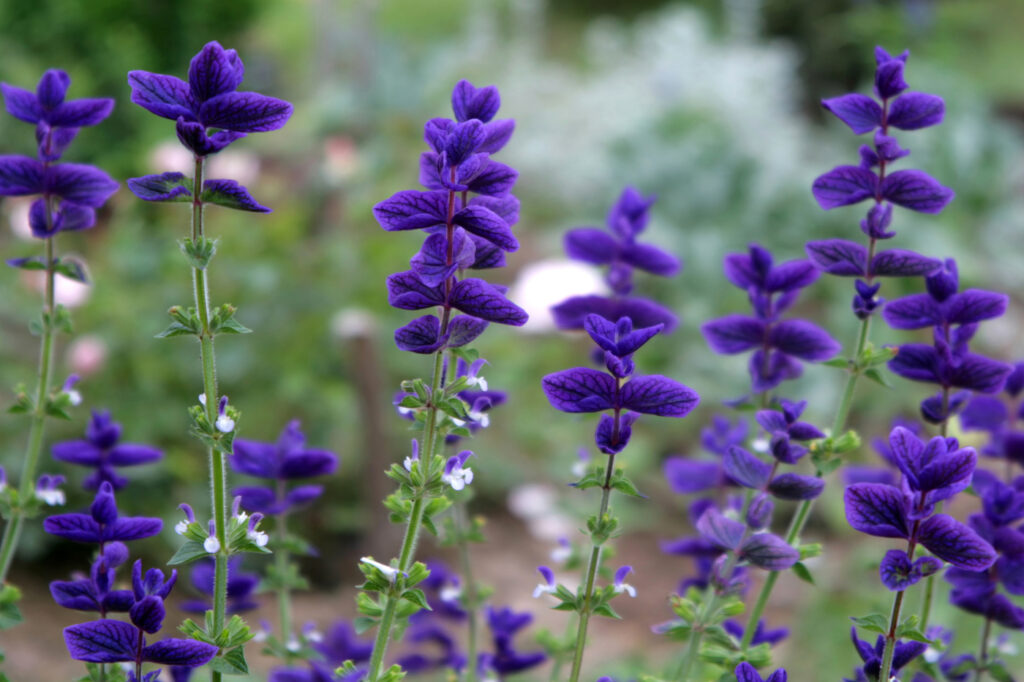
This flower in the mint family (Lamiaceae) is notable not for its flowers but for its striking colored bracts and distilled essential oil.
Plant clary plants at border fronts en masse for a summer-long display the bees will love and for a garden spread of pastel shades in pink, blue, and purple that you’ll love.
California poppy (Eschscholzia californica)
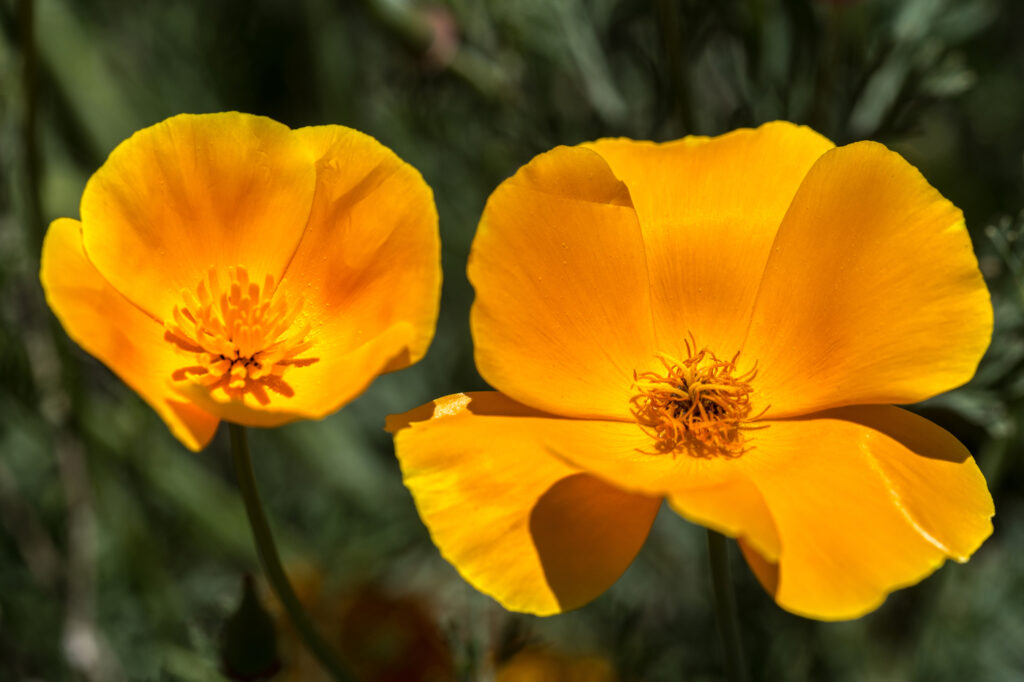
This cheery orange bloom is the state flower of California and blooms all summer long. It has lacy, silver foliage and easily reseeds itself. While it’s technically a short-lived perennial, it’s often treated as an annual.
Perennial Flowers Beginning With C
Crocosmia (Crocosmia spp.)
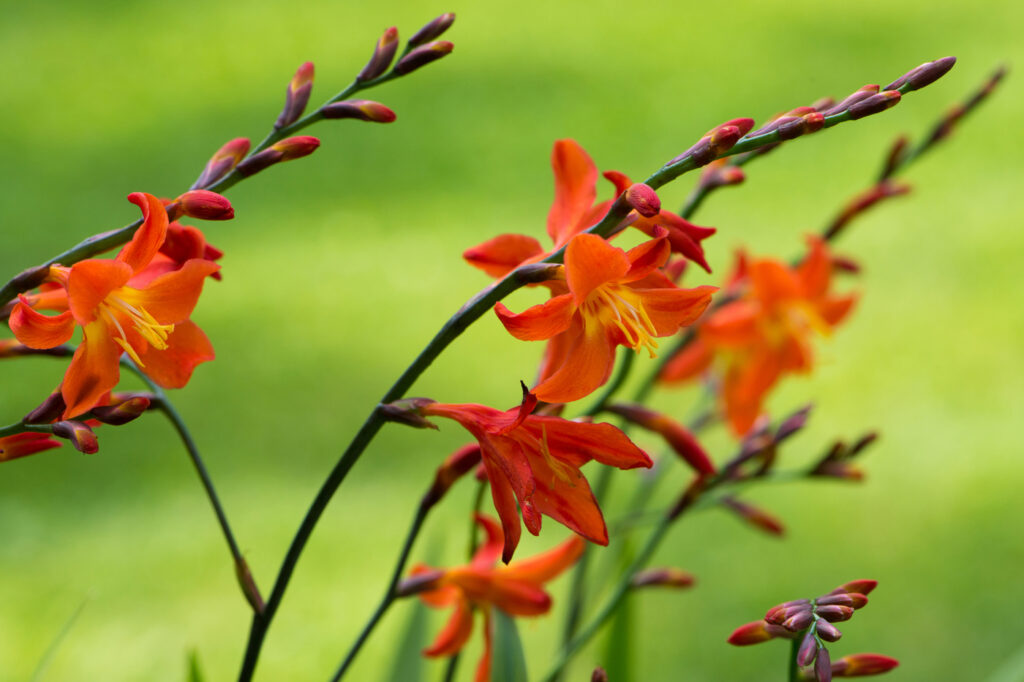
This perennial grows from corms and has tall sword-like foliage. The red flowers are especially magnetic to hummingbirds and are drought-tolerant once established.
The persistent seed heads add texture and interest to the winter garden. One of the most popular varieties is ‘Lucifer,’ a cultivar with intense, fiery-red petals.
Campanula (Campanula rotundifolia)
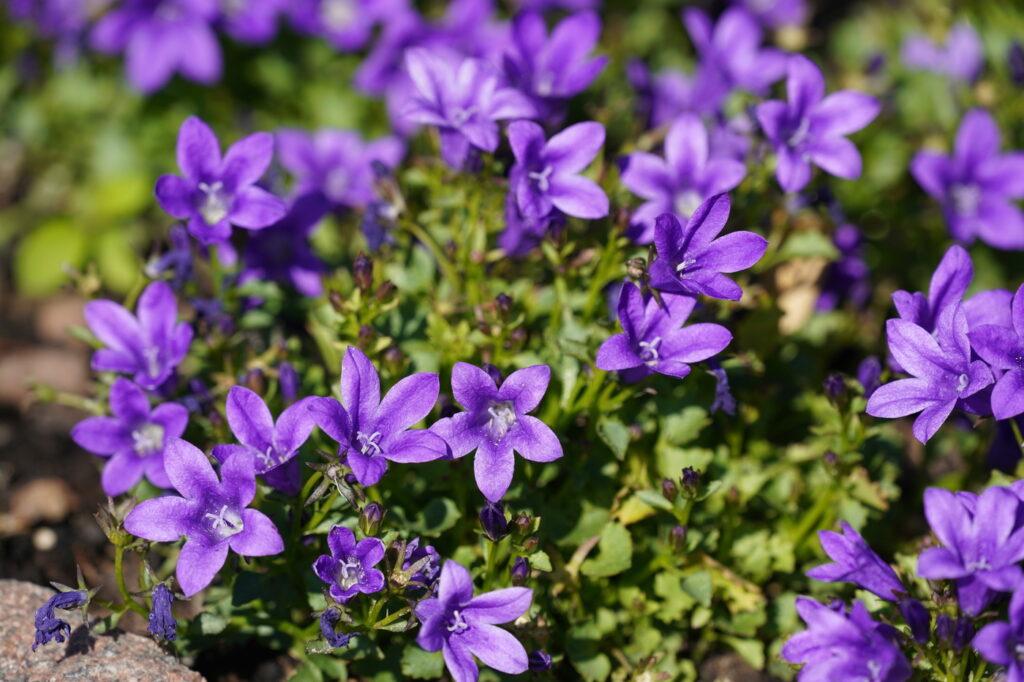
This wildflower with purple to blue, bell-shaped flowers spreads by rhizomes. Campanula flowers from late summer into fall are the perfect addition to a pollinator garden.
Columbine (Aquilegia spp.)
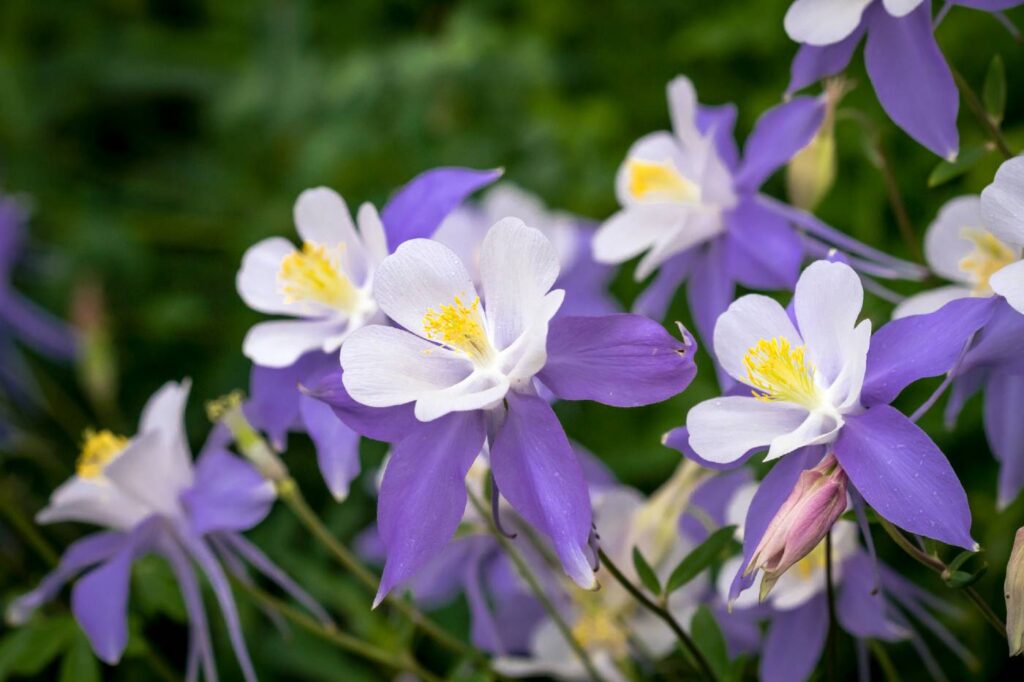
There are 60-70 varieties of columbines in an array of colors. They thrive in part shade and bloom in late spring. Many types are known for their spurred petals, which add splendor and aura to woodland gardens.
Cephalaria (Cephalaria gigantea)
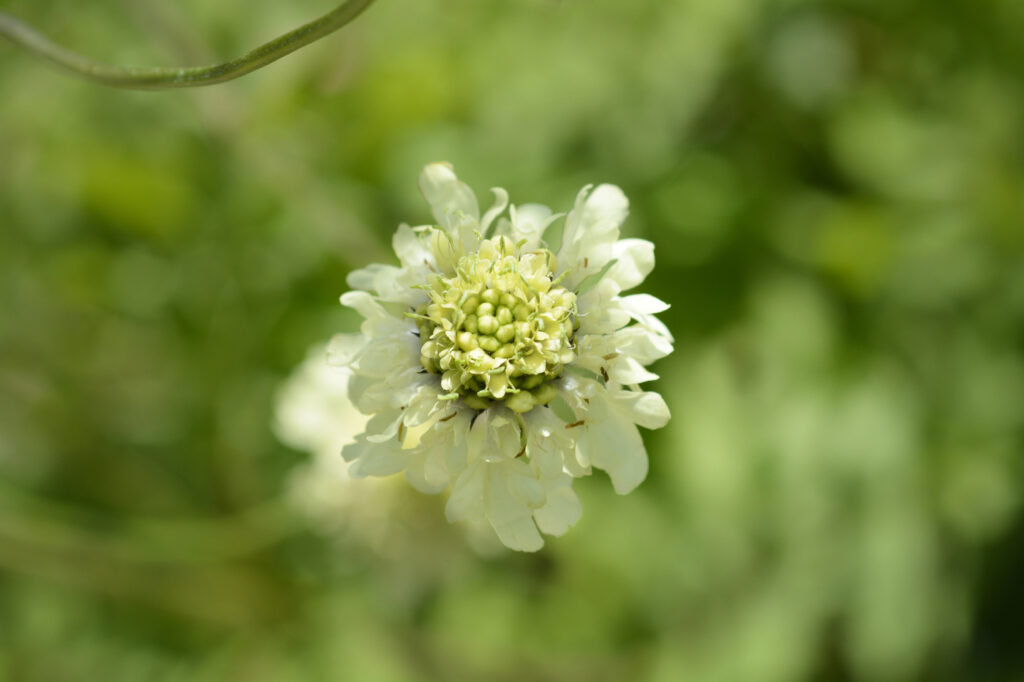
Also known as giant scabious, this perennial blooms second year when grown from seed. It has pincushion butter-yellow flowers on branches that emerge from persistent basal foliage in early summer.
Centranthus (Centranthus ruber)
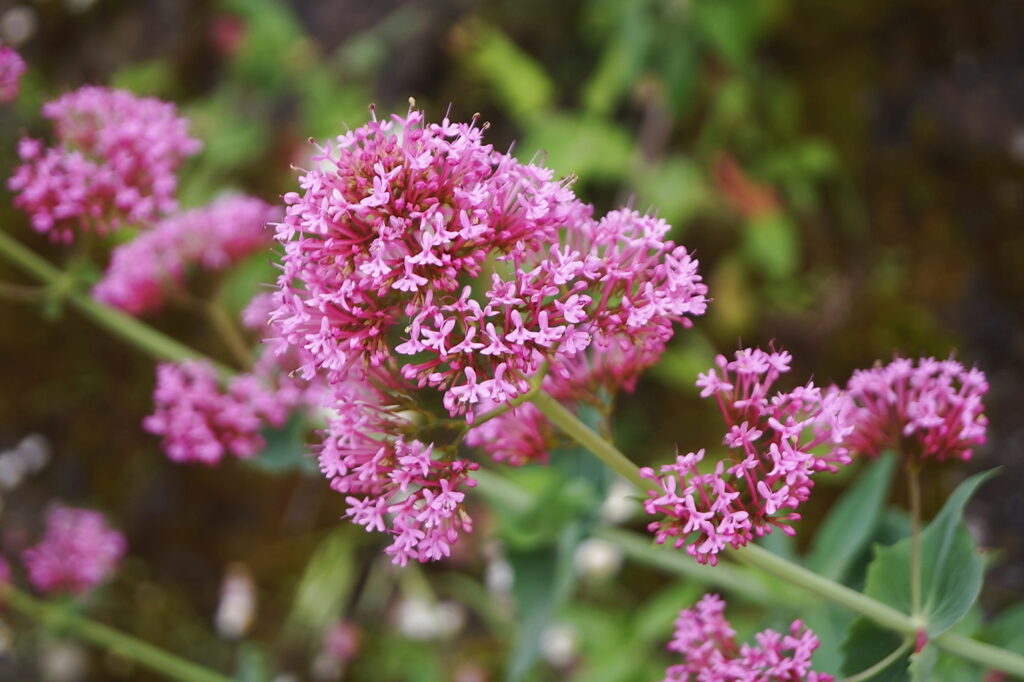
A bulletproof perennial that will flower all season long if deadheaded. Deadheading is also recommended to avoid reseeding. ‘Snowcloud’ is a notable cultivar for its white flowers contrasted by silvery foliage.
Cupid’s dart (Catananche caerulea)
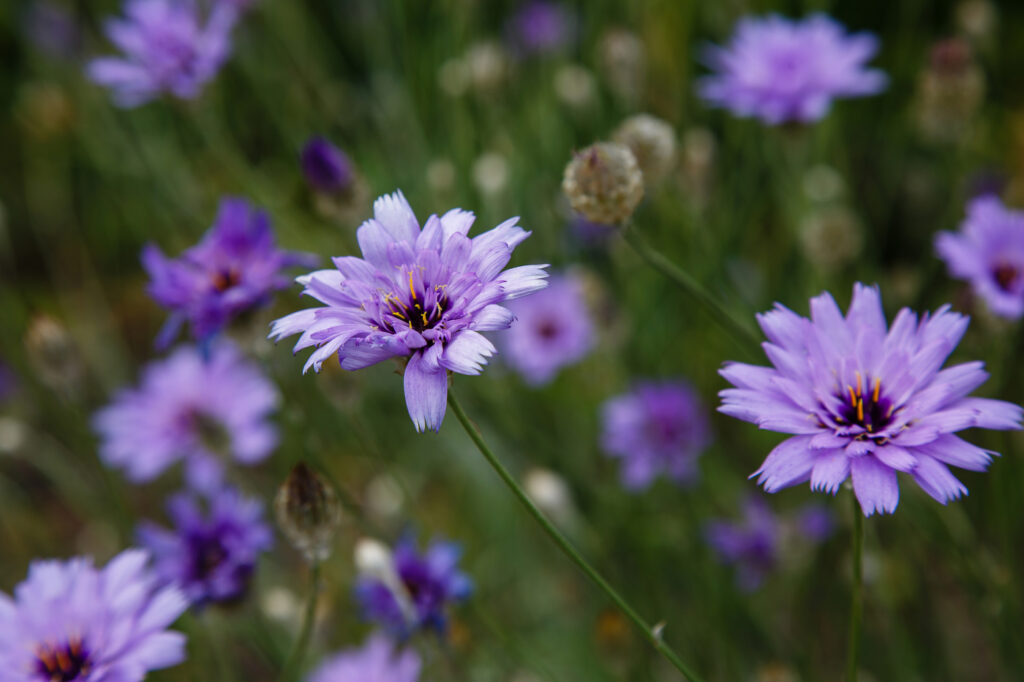
Native to the Mediterranean region, this drought-tolerant perennial has small daisy-like blooms and prefers full sun. Fun fact: Cupid’s dart flowers were used by ancient Greeks in love potions, hence the name!
Chrysanthemum (Chrysanthemum spp.)
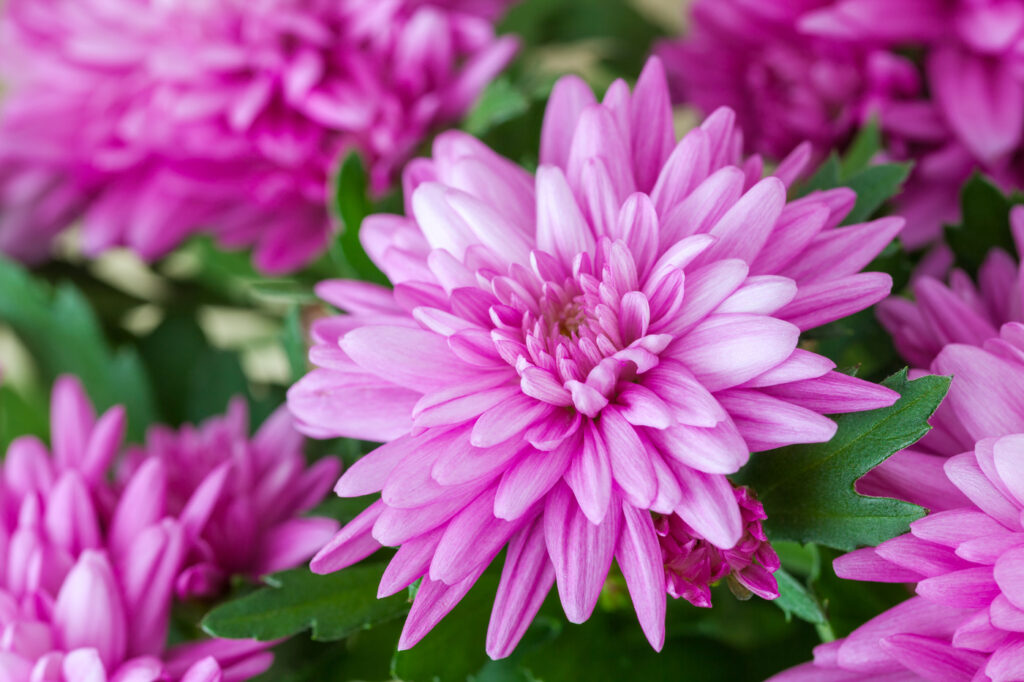
These fall-blooming perennials can often be purchased in containers at garden centers during autumn.
Chrysanthemums are significant in east Asian culture. For example, in Japan, they symbolize royalty, while in China, they are held in high regard artistically and in traditional medicine. Truly one of the more important flowers beginning with C.
Chocolate cosmos (Cosmos atrosanguineus)
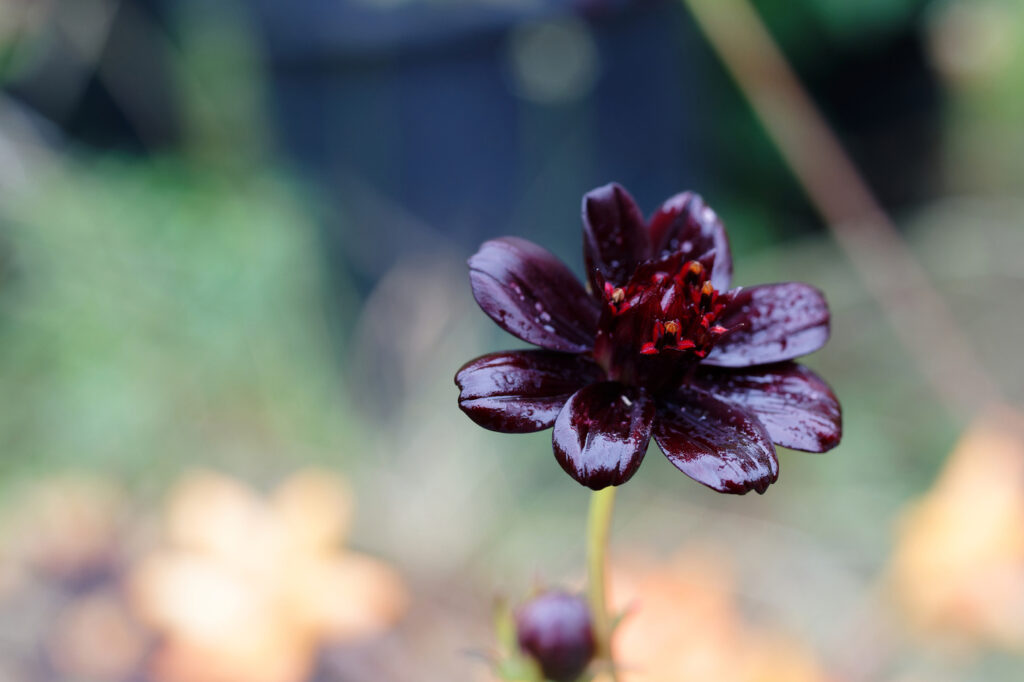
These cosmos have small reddish-brown, almost black, flowers. Their names comes from their distinctive fragrance which smell like chocolate!
They are marginally hardy perennials but need winter protection in colder climates. Warm up your chocolate cosmos and maintain their health by keeping them under the sun!
Cow vine (Campsis radicans)
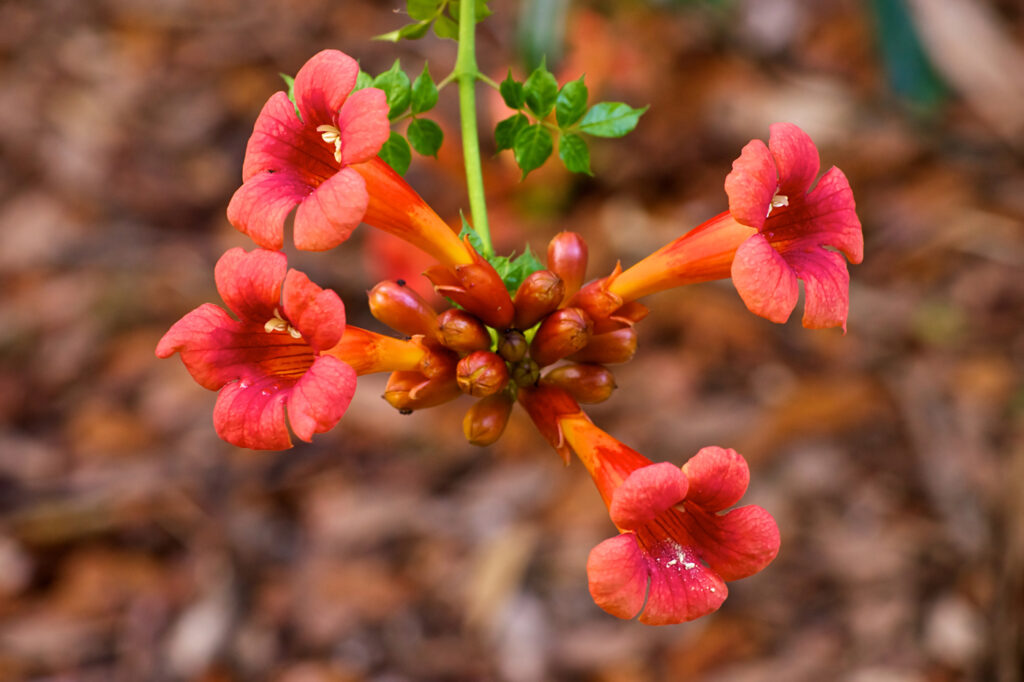
Also known as trumpet vine, this vigorous grower will easily scale any structure you plant it close to. It has large red-orange blooms in late summer and should be pruned drastically every season to contain growth.
But be careful when planting cow vines because they are extremely flammable and irritating to sensitive skin!
Clematis armandii (Evergreen clematis)
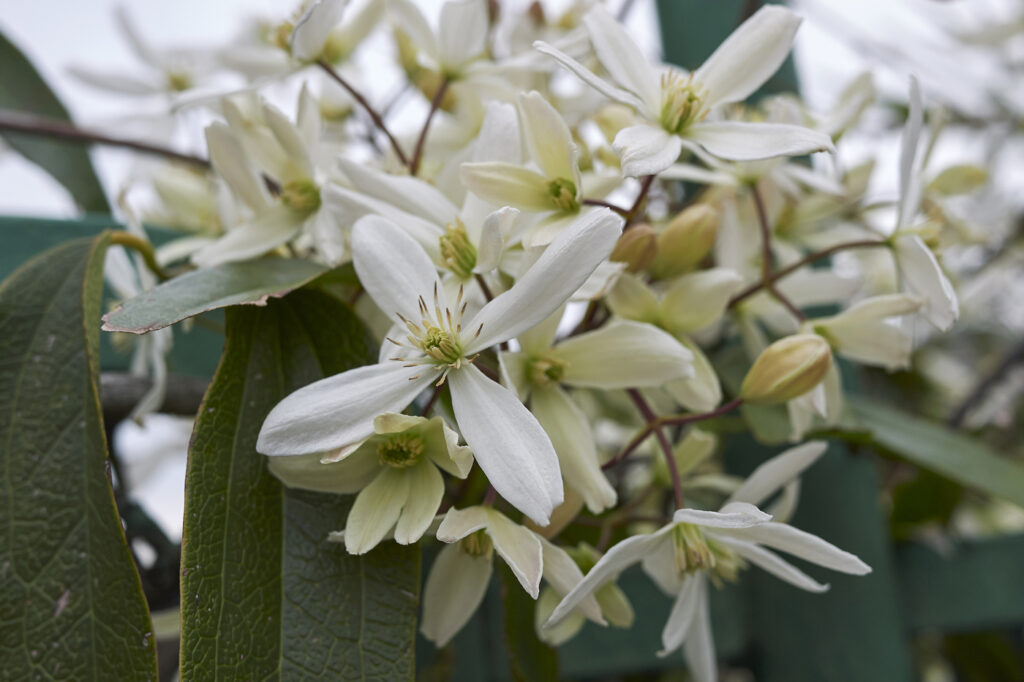
This evergreen clematis blooms in late winter with showy and fragrant white flowers. These flowers are a good choice if you want to spice up your boring brick walls or fences by draping them with greenery!
But be warned, Clematis armandii flowers are toxic to dogs, cats, and horses.
Clematis viticella (Virgin’s bower)
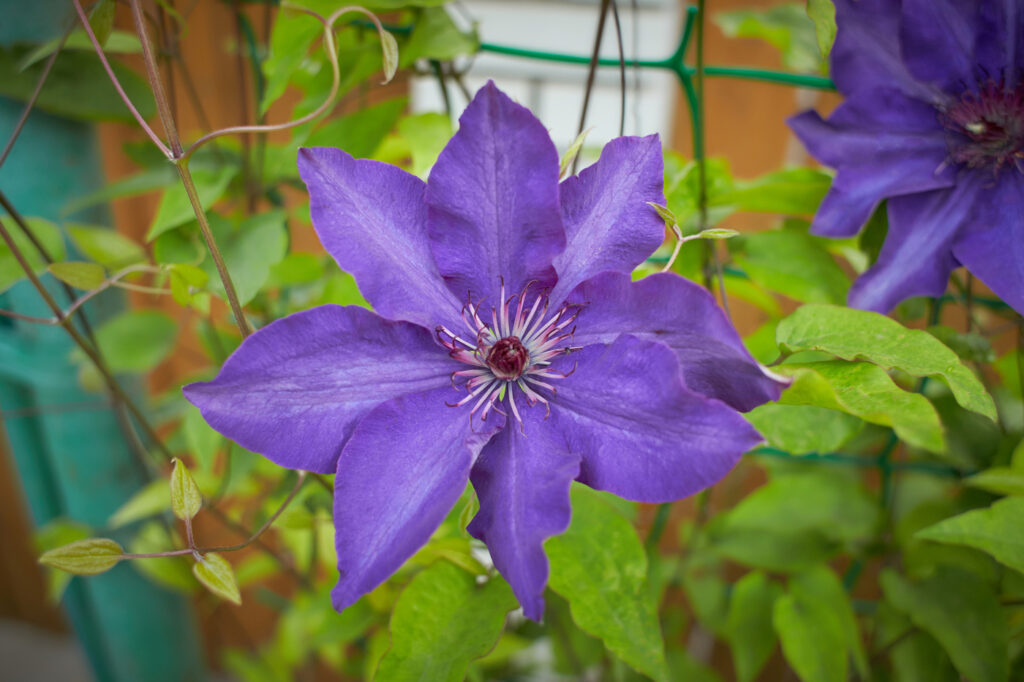
This deciduous group of Clematis originated in southern Europe and included hundreds of hybrid varieties with large, showy flowers in diverse shapes and shades.
They bloom from midsummer through fall and should be pruned hard in late winter. When not pruned, they can reach up to 10-15 feet and become a tangled mess for you to deal with!
Clitoria ternatea (Blue butterfly pea)
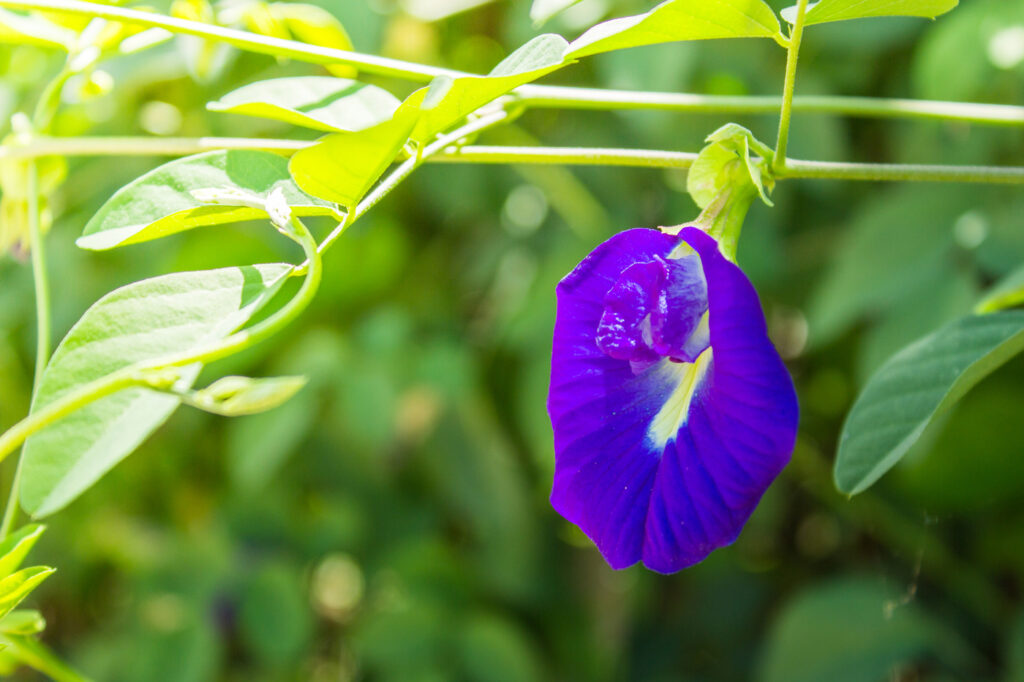
This tender perennial is in the pea family (Fabaceae) and has showy purple flowers. It’s native to equatorial Asia and is a vining climber that prefers moist soil.
These flowers are believed to have medicinal properties and are commonly brewed as an herbal tisane. Turn it into sweet tea and add a splash of lemon for a colorful surprise!
Cardoon (Cynara cardunculus)
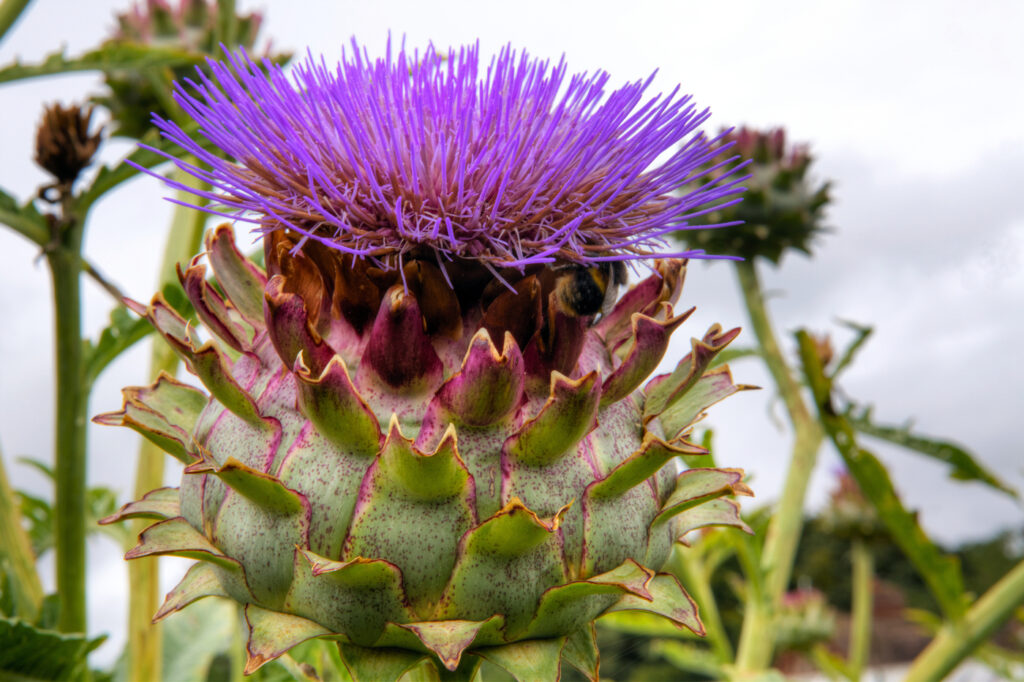
This perennial has large, silvery green basal foliage and tall, purple thistle-like flowers that are loved by bees.
It grows well with well-drained soil and in direct sunlight. Add to that that it doesn’t need any pruning and is drought-resistant, and you have yourself an easy to grow and edible flower!
For a healthy dish, use its stalks in stews or gratins.
Calycanthus (Calycanthus floridus)
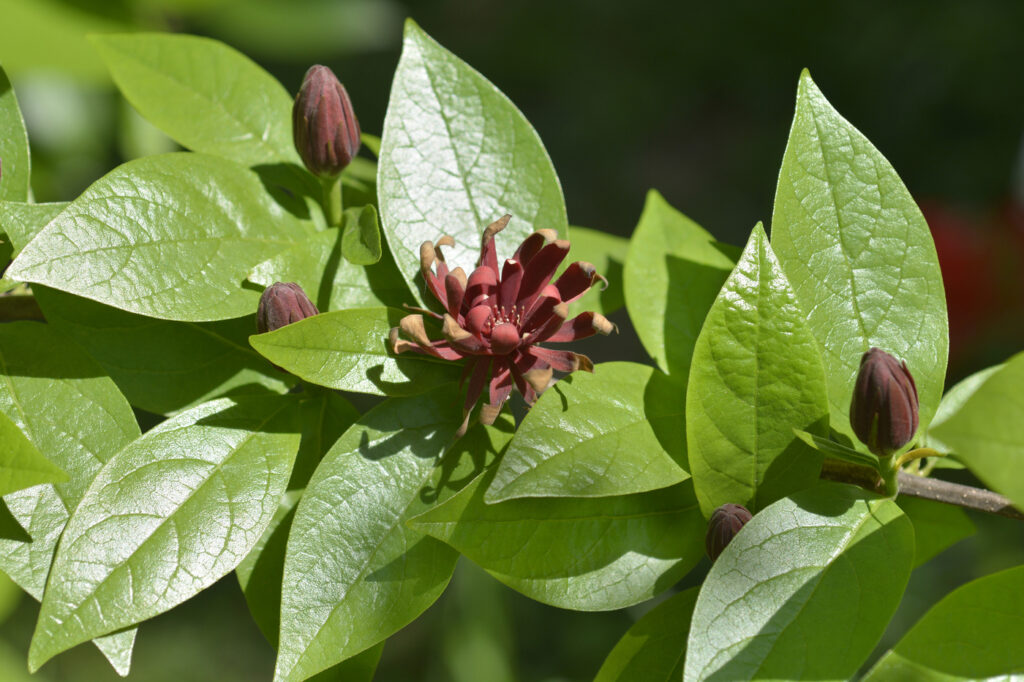
Also known as Eastern sweetshrub, this specimen plant has fragrant reddish-brown flowers that are reminiscent of magnolia flowers. It’s a deciduous suckering shrub that can grow to 9 feet and has striking yellow foliage in the fall.
If you or your friend is into nude or dark colors, this sweetshrub is sure to be sweet on the two of you!
Camellia japonica (Japanese camellia)
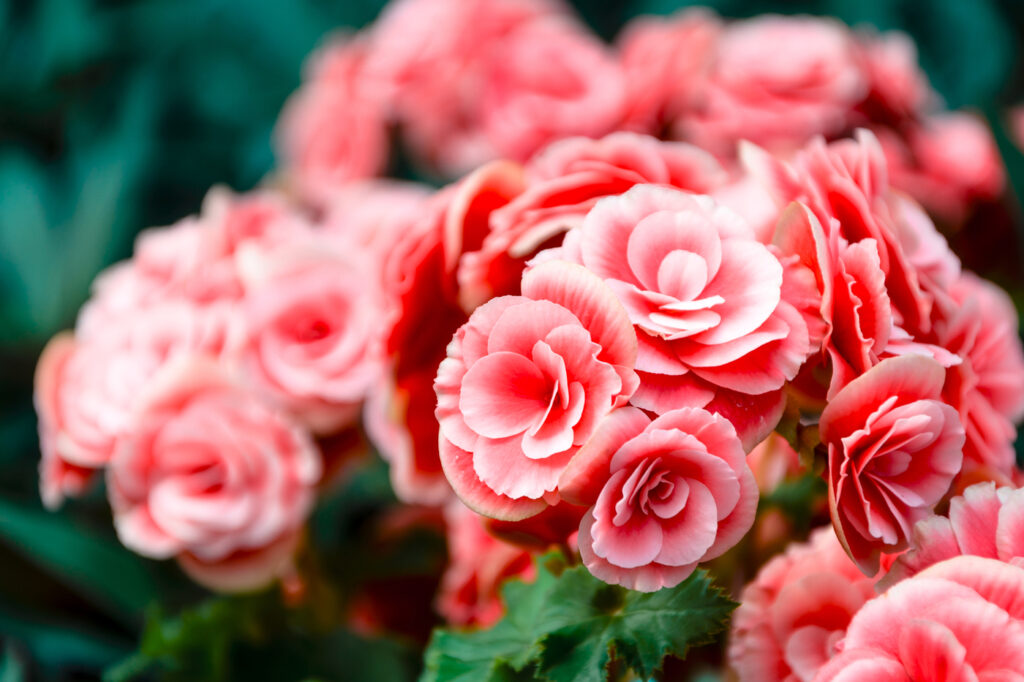
This evergreen shrub has glossy, dark-green leaves and blooms in early spring with large, showy flowers that can be white, red, or pink. They are attractive to pollinators but susceptible to pests and diseases like petal blight fungus.
Although a troublesome plant to maintain, Japanese camellia is worth the fuss once they bloom.
Chinese dogwood (Cornus kousa)
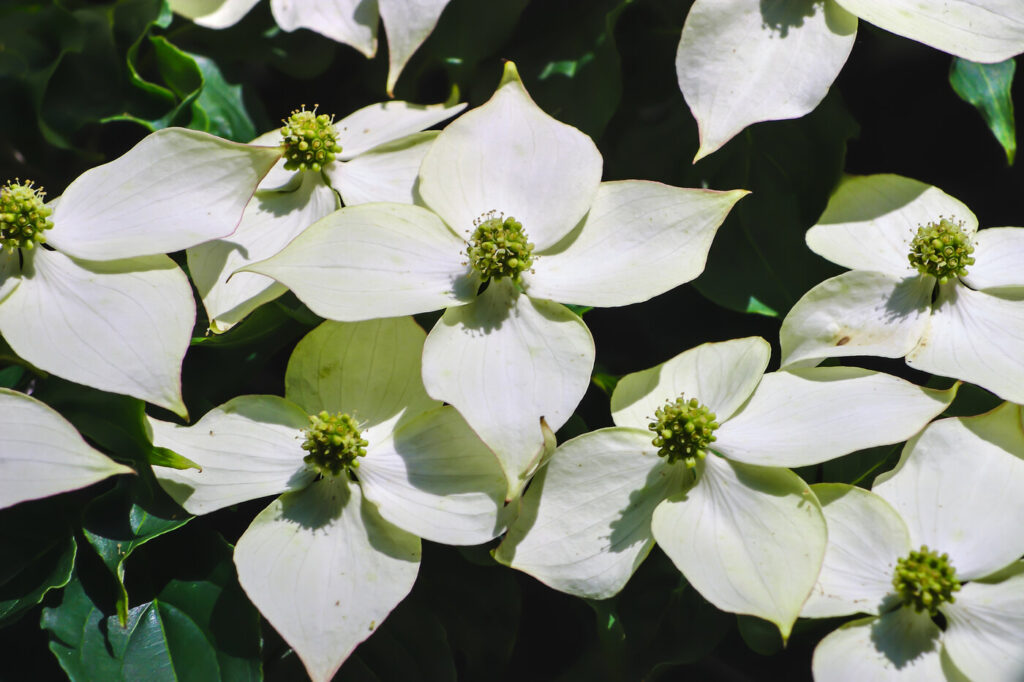
Chinese dogwood is known for its late-spring display of delicate and white flowers. This small tree is deciduous and prefers moist, rich soil.
Unlike flowering dogwood, Chinese dogwood is hardier and generally pest free, which makes it a good alternative for gardeners who want white flowers from the Cornaceae family.
Cornelian cherry dogwood (Cornus mas)
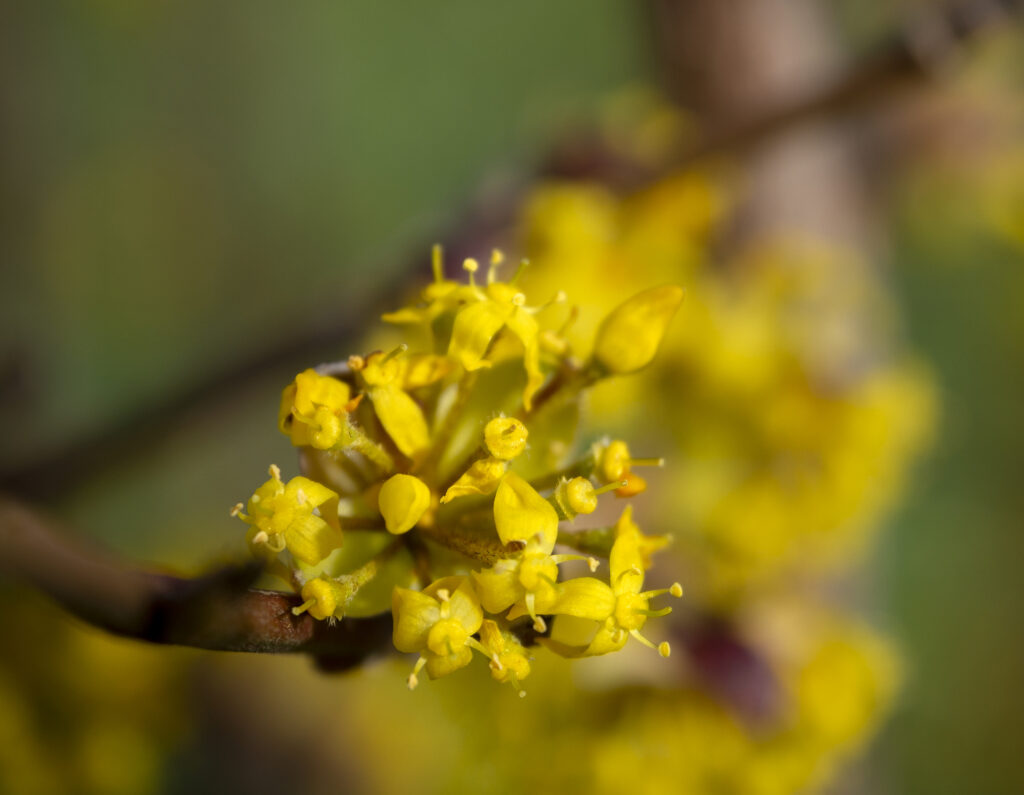
The Cornelian cherry dogwood is another member of the Cornaceae family and is a shrub native to southern Europe and southwestern Asia.
While more known for its red berries that sprout in the summer, Cornelian cherry dogwood is also covered in masses of tiny yellow flowers that bloom in late winter.
Crocus (Crocus spp.)
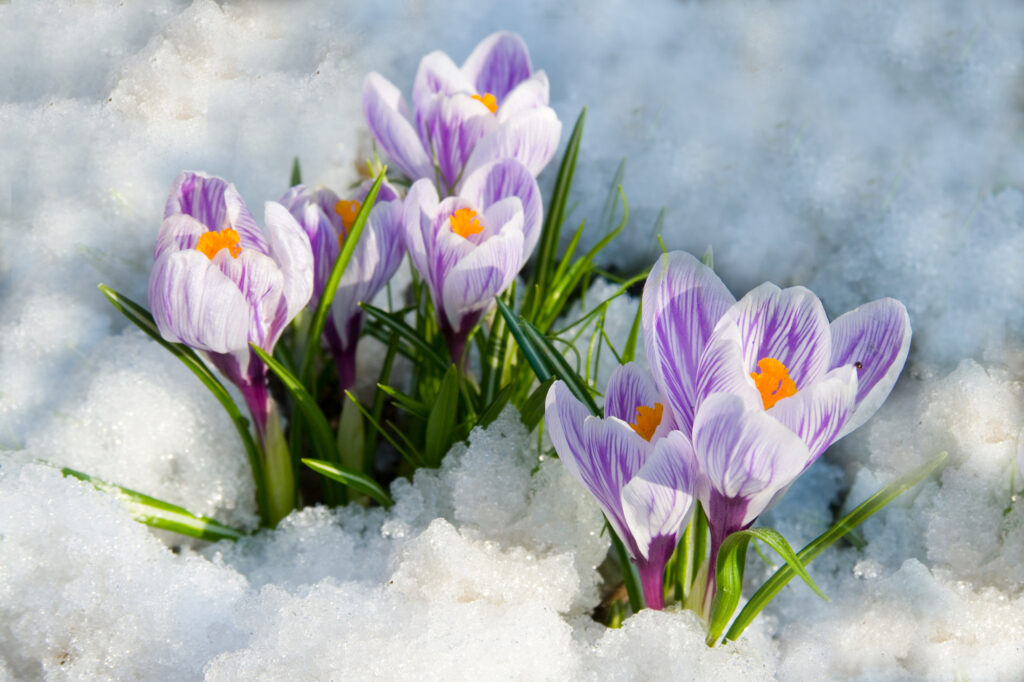
Celebrate spring with these flowers that sprout at the first signs of the disappearing winter. Although they grow in nearly every area with soil, Crocus plants are prone to viral diseases.
They also serve as a tasty snack for wild animals. However, remember to keep them away from your pets; ingesting any part may give them liver failure.
Calla Lily (Zantedeschia spp.)
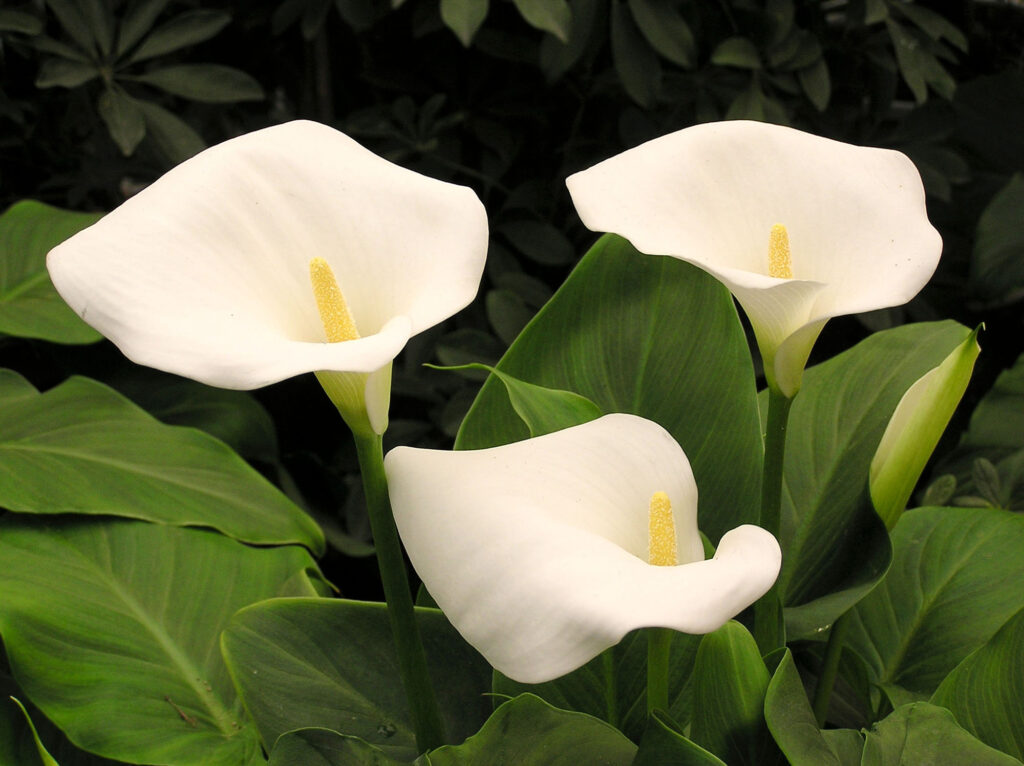
Despite the name, calla lilies are not true lilies. Instead, they come from the Arum family and originally come from South Africa.
They are herbaceous perennials with attractive spear-shaped foliage and interesting flowers throughout the summer.
These plants prefer moist, humus-rich soils and some winter protection in colder climates.
Coneflower (Echinacea purpurea)
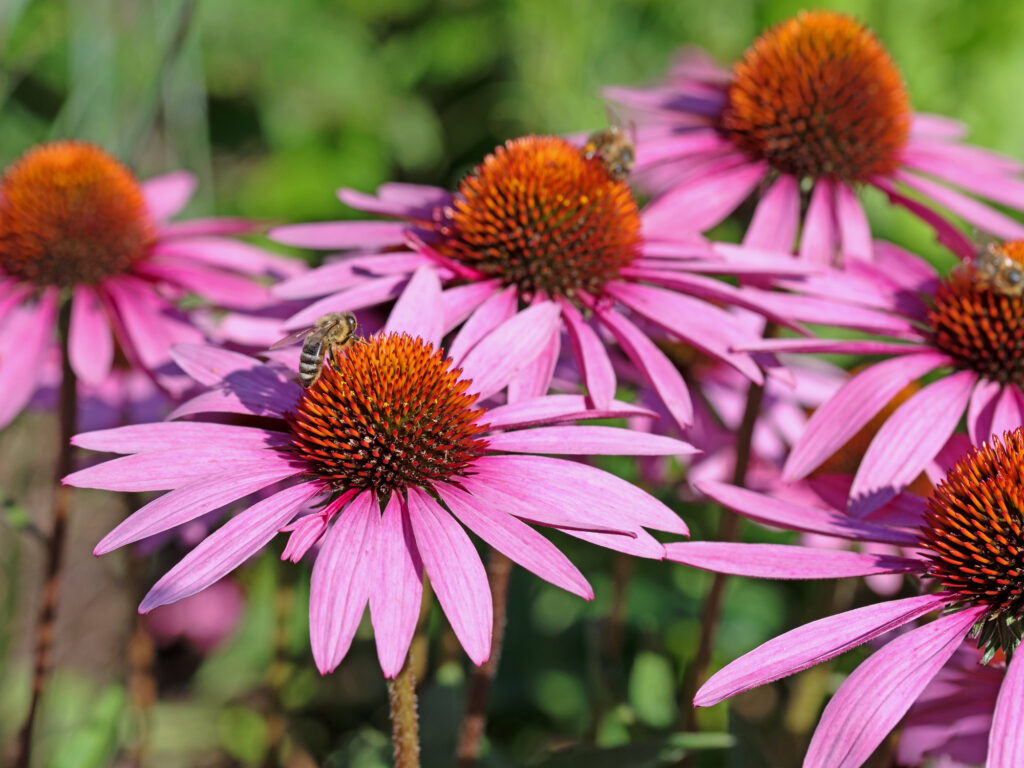
Coneflowers have large aster-like flowers with a protruding red-orange center. The flowers are generally purple, but recent varieties also come in white and hot sunset shades.
They prefer full sun, are tolerant to drought, and deter pests like deer while also enticing helpful pollinators in your garden.
Cyclamen (Cyclamen purpurascens)
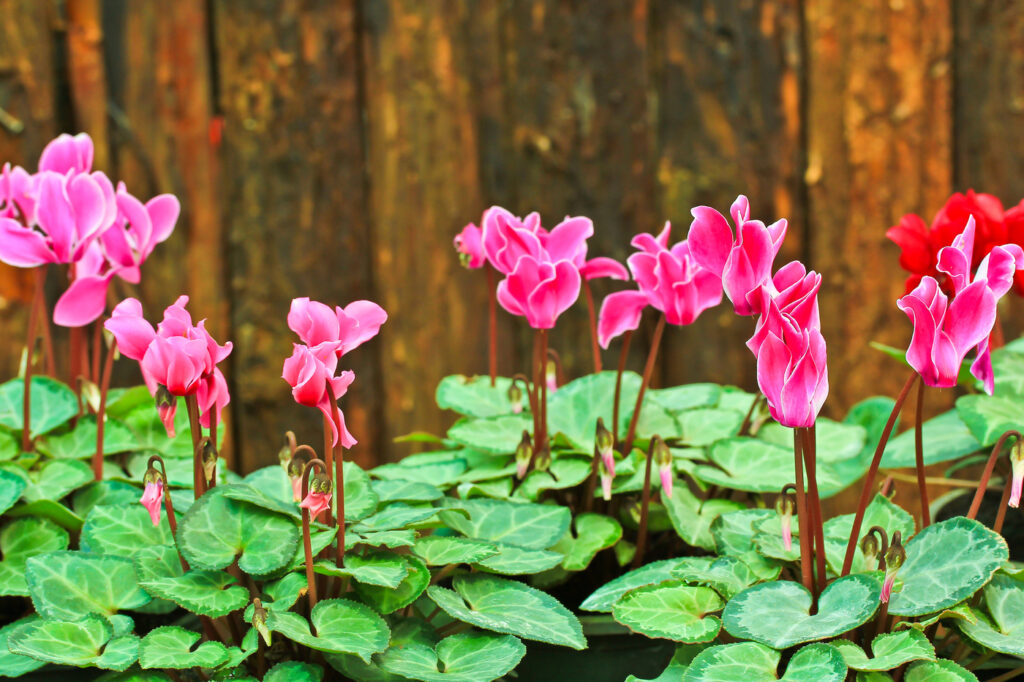
Cyclamen make an excellent addition to woodland gardens. The foliage emerges in the fall and is persistent until they bloom in late winter with small inflexed bright purple flowers. They’re grown through bulbs and will naturalize when given summer shade.
Frequently Asked Questions (FAQ) About Flowers that Start with a C
What are some yellow flowers that start with C?
Some species of yellow flowers that start with C are Craspedia (billy buttons), and Cornus mas (Cornelian cherry dogwood), which is covered in yellow flowers that bloom in early spring.
What are some white flowers that start with a C?
Some noteworthy cultivars of white flowers that begin with C are Centranthus ruber ‘Snowcloud’ and China aster ‘tower white’.
What are examples of pink flowers that start with the letter C?
Clarkia is one of many pink flowers that start with the letter C. Cosmos ‘Cupcakes blush’ is an excellent variety that has frilly pink blooms throughout the summer.
There are also several pink varieties of camellia and chrysanthemums.
What are orange flowers that start with C?
Some of the best orange flowers that start with C are calendula, California poppies, cosmos ‘Diablo,’ and carthamus ‘Zanzibar.’
What are some red flowers that begin with C?
Some names of flowers that start with C in the red category are coreopsis, cow vine (Campsis radicans), and crocosmia ‘Lucifer.’
What are some common flowers beginning with C?
Though it all depends on your regional climate, some universally common flowers beginning with C include coneflowers, cosmos, camellia, and calla lily.
What are some blue flowers that start with C?
Some nice blue flowers that start with C are cornflower, clary sage, and cynoglossum
What are examples of purple flowers beginning with C?
Cardoons are known for their thistle-like purple flowers, and many varieties of Clematis viticella can be found in shades of purple.
What are some spring flowers that start with C?
Some spring flowers beginning with C are columbine, crocus, camellia, and cyclamen.
Feature Image: ileana_bt; Image 1: photoncatcher63; Image 2: anterovium; Image 3: agnieszka_g; Image 4: seksan44; Image 5: 阿橋 HQ; Image 6: Michael Schmidt; Image 7: Movieaboutyou; Image 8: okiepony; Image 9: KVM50; Image 10: kathyclark; Image 11: Amada44; Image 12: thomasmales; Image 13: Dink101; Image 14: HanjoHellmann; Image 15: Judithdz; Image 16: Sujitto; Image 17: TeriVirbickis; Image 18: nahhan; Image 19: sansa55; Image 20: ovju@yandex.ru; Image 21: Chamille White; Image 22: Wirestock; Image 23: sorsillo; Image 24: simonapavan; Image 25: IreneFox1; Image 26: aamovi; Image 27: Debu55y; Image 28: nahhan; Image 29: avarand; Image 30: WMeidinger; Image 31: AlikaObraz; Image 32: Enika100; Image 33: Inzyx; Image 34: mschuppi; Image 35: Deerphoto
